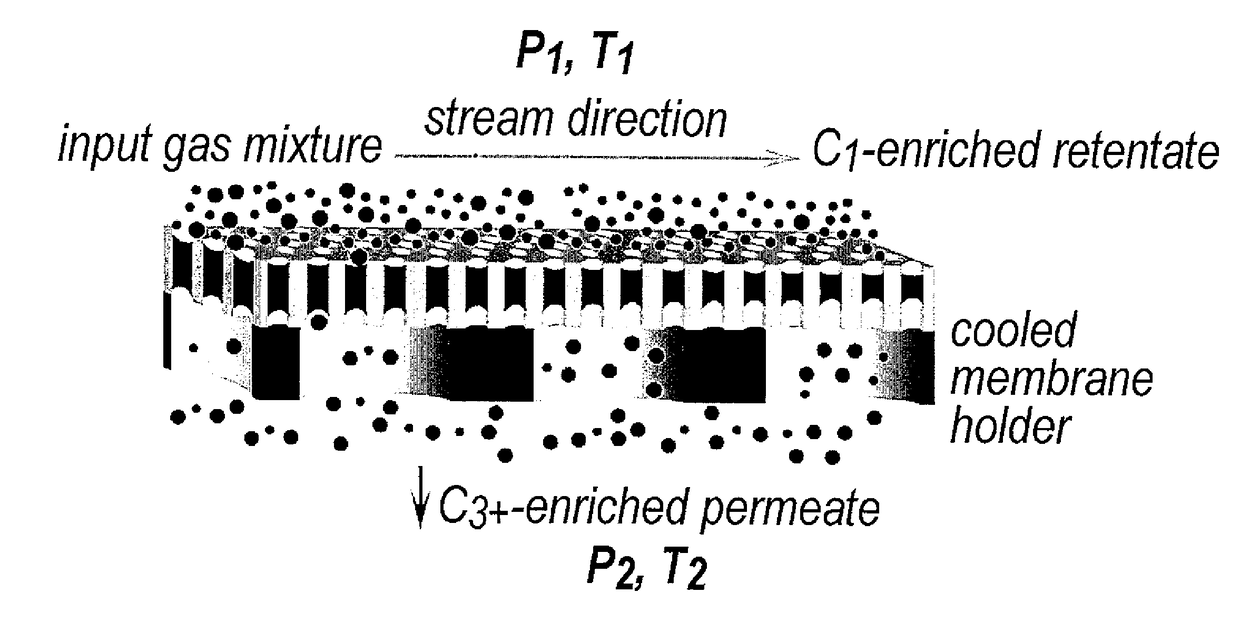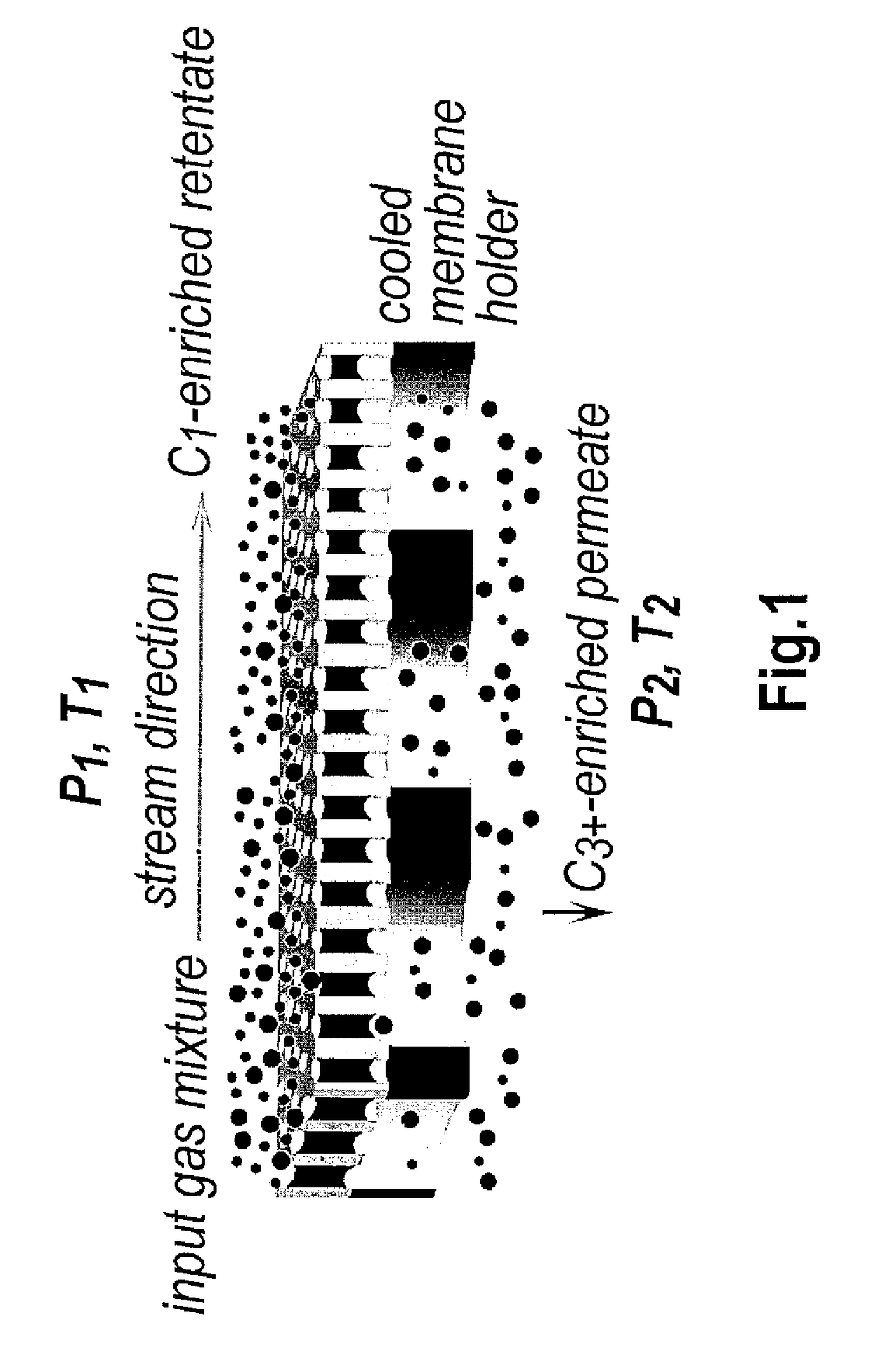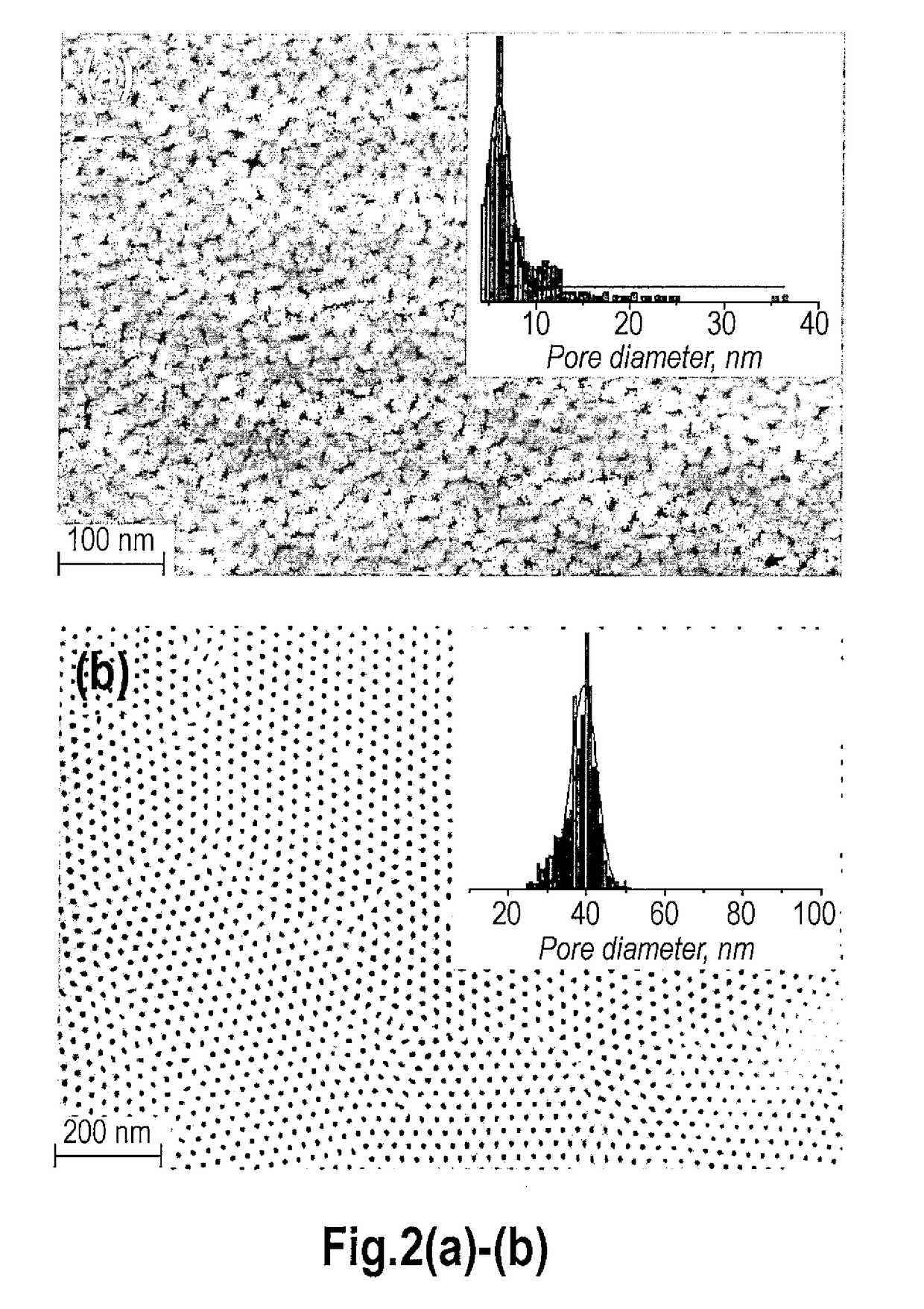Method of Fractionating Mixtures of Low Molecular Weight Hydrocarbons
a hydrocarbon and low molecular weight technology, applied in the field of membrane gas separation, can solve the problems of uneconomical treatment methods and ineffective methods for industrial gases, and achieve the effect of avoiding energy costs and limited solubility
- Summary
- Abstract
- Description
- Claims
- Application Information
AI Technical Summary
Benefits of technology
Problems solved by technology
Method used
Image
Examples
examples 1 to 5
Separation of Test Hydrocarbon Mixture on Microporous Inorganic Membranes Made from Anodic Aluminum Oxide
[0023]For illustrating the method of fractionating low molecular weight hydrocarbons using the approach of capillary condensation on microporous inorganic membranes anodic aluminum oxide membranes were formed 100 microns thick and with pore diameter of 5 to 250 nm.
[0024]In view of low permeability of the membranes with small diameter pores and significant thickness (required for providing a sufficient mechanical strength) a membrane with 6 nm pore diameter (Example 1) was formed as a layered asymmetric membrane having a selective layer (with layer thicknesses: 90 microns at Dpore=120 nm; 7 microns at Dpore=40 nm; 3 microns at Dpore=6 nm). The membrane was formed by anodic oxidation in 0.3M oxalic acid solution by stepwise reduction of voltage. The layer with 120 nm pore diameter was formed at 120V voltage, the layer with 40 nm diameter—at 40V, the layer with 6 nm diameter—at the ...
example 6
Separation of a Test Hydrocarbon Mixture Using a Track Polyethylene Terephthalate Track Membrane
[0034]A commercially available sample of Whatman Nuclepore polycarbonate membrane with pore diameter of 100 nm was used as membrane material in this example. Microphotograph of the membrane surface is shown in FIG. 2. The pore diameter determined according to scanning electron microscopy was 110±27 nm (Table 1). The experiment on fractionating the low molecular weight hydrocarbons using capillary condensation on track membrane was carried out similarly to the experiments described in Examples 1 to 5. The experimental parameters are outlined in Table 1.
[0035]The maximum separation coefficients achieved for the outlined conditions were: α(C3H8 / CH4)=3.5; α(i-C4H13 / CH4)=4.4; α(n-C4H10 / CH4)=4.1; α(i-C5H12 / CH4)=5.6; α(i-C5H12 / CH4)=6.8; α(i-C5H12 / CH4)=7.8. The light component (C1 and C2) stage cut was ˜14% at the feed stream of 230 m3 / (m2·atm·h). A relatively high light component stage cut in th...
PUM
 Login to View More
Login to View More Abstract
Description
Claims
Application Information
 Login to View More
Login to View More - R&D
- Intellectual Property
- Life Sciences
- Materials
- Tech Scout
- Unparalleled Data Quality
- Higher Quality Content
- 60% Fewer Hallucinations
Browse by: Latest US Patents, China's latest patents, Technical Efficacy Thesaurus, Application Domain, Technology Topic, Popular Technical Reports.
© 2025 PatSnap. All rights reserved.Legal|Privacy policy|Modern Slavery Act Transparency Statement|Sitemap|About US| Contact US: help@patsnap.com



